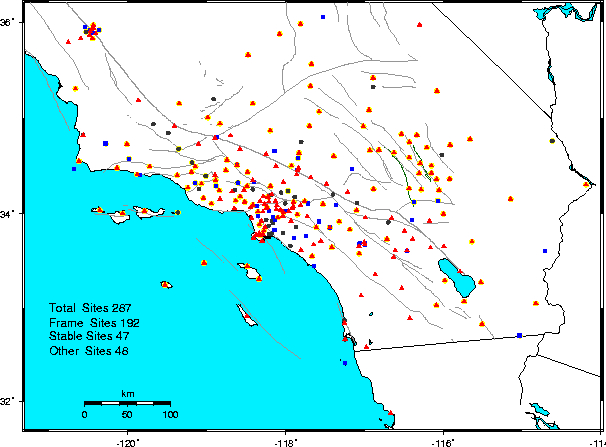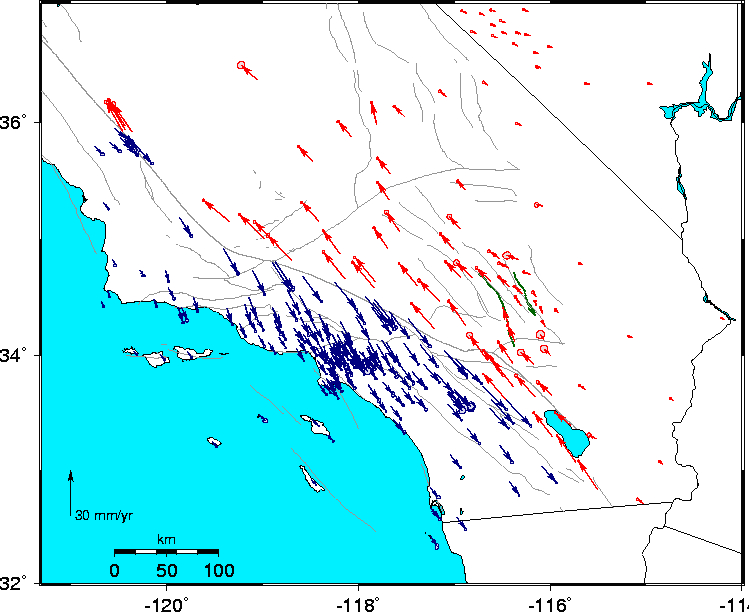| Stable sites | These are sites with random walk process noise less than 2 mm2/yr |
| Frame sites | These are sites with random walk process noise less than 0.5 mm2/yr and are
used to realize the daily SCIGN reference frame in times series analysis |
| Full Analysis | These results are from a foward Kalman filter run with velocities, offsets and post-seismic
log coefficients estimated |
| Time Series Analysis | These results are from simple fitting to the time series results. A correlated
noise model using successive averging times is used to obtain the uncertainties |
| Sigmas | Attempts have been made to make all sigmas in the combined products realistic using
a form of correlated nioise model developed for tsview
For the full analysis results, these sigmas reflect
in some sense an absolute uncertainity and may be conservative for differential motions bewteen sites.
Alternative models are discussed in the SIO Refined Model
The sigmas for velocity estimates on the time series plots are not realistic because these are generated from a
simple plotting program.
|
| Analysis | Description |
| com_96_0309_fin.vel |
Combined JPL and SIO results for all stable sites from full analysis. Sites with a * on the name
are used to define the SCIGN reference frame. This file also constains the North America and
Pacific sites used to define the North American frame for SCIGN |
| com_96_0309_TS.vel |
Combined JPL and SIO results for all stable sites from time series analysis |
| jpl_96_0309_fin.vel |
JPL only results for all stable sites from full analysis. The JPL stacov files only
contain sites in SCIGN region and a * on the sites here denote the local sites used to the
reference frame |
| jpl_96_0309_TS.vel |
JPL only results for all stable sites from time series analysis |
| sio_96_0309_fin.vel |
SIO only results for all stable sites from full analysis |
| sio_96_0309_TS.vel |
SIO only results for all stable sites from time series analysis |
| JPL_2003_09_noam.vel |
JPL results from JPL
table2.txt in North America frame |
| SIO_2003_09_noam.vel |
SIO results from SIO
refinedModelVelocities.cgi in North America frame |
| CMM_2003_09_noam.vel |
SCEC Crustal Motion 3.0 model from
vels.final in North America frame. Note: There are no
height velocities in this file. |



